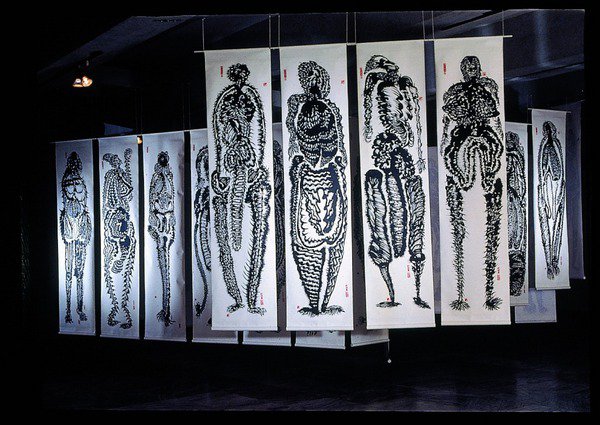Boundaries on the Move
dal 17/5/2012 al 10/8/2012
Segnalato da
Chang Chien-Chi
Chen Chieh-Jen
Chen Ching-Yao
Chu Chun-Teng
Hou Chun-Ming
Huang Chih-Yang
Hsieh Ying-Chun
Huang Hai-Hsin
Miki Krastman
Nira Pereg
Peng Hung-Chih
Michal Shamir
Su Yu-Hsien
Charwei Tsai
Tsui Kuang-Yu
Tu Pei-Shih
Yao Jui-Chung
Wang Ya-Hui
Wu Chi-Tsung
Fang-Wei Chang
Dalia Levin
17/5/2012
Boundaries on the Move
Herzliya Museum of Contemporary Art, Herzliya
A Cross-Culture Dialogue. The show features the work of 16 Taiwanese artists and three contemporary artists from Israel in dialogue with one another. They'll examine those boundaries "on the move" in everyday life in the context of the social, political, and economic issues facing Taiwan and Israel today.

curated by Fang-Wei Chang and Dalia Levin
Taipei Fine Arts Museum is pleased to announce Boundaries on the Move: A Cross-Cultural Dialogue, a collaboration with Herzliya Museum of Contemporary Art, Israel. The exhibition will run from 18 May to 11 August 2012 at the Herzliya Museum of Contemporary Art.
The most obvious contextual concept of the boundary is linked to that of the nation-state. Often associated with the territory or border of a country, boundaries have changed significantly over the course of human history. Social and cultural boundaries are everywhere in daily life and also constantly subject to change. National borders, personal behaviors, the structure of fortifications, molecular-level cellular division, the demarcation of academic fields, the definitions of words, and philosophical concepts are all continually and variously redefined. Boundaries are always moving via combinations of real action and shifts in consciousness.
To move boundaries implies a multitude of metaphors. Through intense and active dialogue—which brings us closer in perspective or proximity now and again—we attempt to cross various boundaries, and to reverse inside and out. Over time, people traverse considerable boundaries of all types and new, other boundaries are continually produced. Every moment, a part of our consciousness goes through the cycle of death and rebirth; blurring, dissolving, crossing, and reorganizing countless boundaries in the process. Boundaries imply definition and demarcation; their fluidity allows for new understandings and relations between sovereign and subject, ever in a cycle of change.
Where there are boundaries, there are boundary crossings; but one is not outside of bounds even after crossing. Foucault proposed that resistance accompanies power: "Where there is power, there is resistance and yet this resistance is never in a position of exteriority in relation to power." Similarly, the crossing of boundaries never takes place in a position exterior to the definition of the boundary. Boundaries must be crossed to remain boundaries. Boundaries shift, because subjective and objective relations and realities shift—effecting change both in the consciousness of people and in real life. This perpetual crossing and changing of boundaries transcends the self, to even become a subject.
The exhibition features the work of sixteen Taiwanese artists active from the 1980s to the present and three contemporary artists from Israel in dialogue with one another. They will examine those boundaries "on the move" in everyday life in the context of the social, political, and economic issues facing Taiwan and Israel today; addressing complex issues of individual identity, territorial borders, society, economics, and immigration in this age of advanced technology and globalization.
Opening Friday, May 18, at 12:00 p.m
Herzliya Museum of Contemporary Art
4 Ha'banim Street
Herzliya 46379, Israel
Mon, Wed, Fri, Sat 10-14, Tues-Thu 16-20
Entrance 10 NIS



